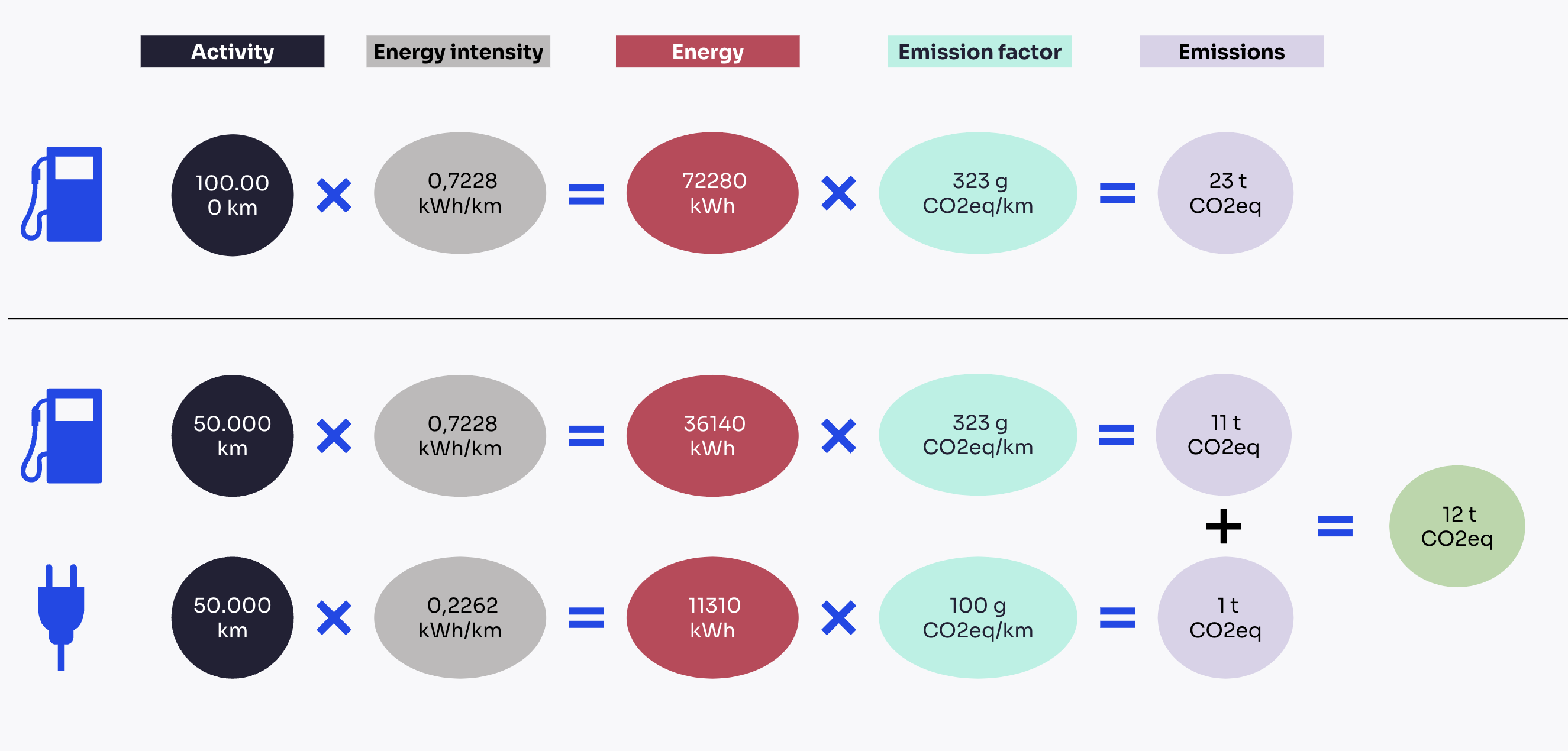ClimateOS is built as a system of distinct but interconnected workspaces. This article focuses on the first three that support you in building your climate action plan:
- The City inventory
- Transition hierarchy including Transition elements
- Action editor
The City inventory
The journey starts with the City inventory, where you build your baseline emission inventory and tailor it to your municipality. This is the foundation that all the modelling you do in later stages of using ClimateOS is based on. The inventory is an activity-based inventory. This means that the emissions are calculated on the basis of the actual activities being carried out, i.e. the km traveled to move people from A to B or the m2 heated with different heating systems. The calculation itself is based on the Carbon Causal Chain (CCC), which calculates the emissions of using a specific mechanism to carry out an activity in the city as follows:
Activity x Energy Intensity x Emission Factor (resource) = Emissions
A CCC can be set up for every mechanism that carries out activities in our municipalities.
Transition hierarchy
Once you’ve tailored the inventory to your municipality, you can start giving your plan a structure in the Transition hierarchy. For most cities, this structure includes the sectors transport, buildings, energy and waste. Below each sector, you can build sub-sectors to give your plan more thorough structure. The lowest level of the structure are the Transition elements, the building blocks of your transition to net-zero.
Transition elements
The Transition elements model the shift from a high-carbon mechanism to a low-carbon mechanism by, simply put, comparing different CCCs from the inventory with each other, depending on which shift you’re planning.
Example:
We have a stock of 100.000 km per year driven by petrol cars and, with the help of the Transition element for electric cars, we want to model the emission savings we achieve through shifting 50% of those km to electric cars. For this example the calculation would be as follows:

Hence, if we shift 50% of the 100.000 km from petrol to electric cars, we would have an effective saving of 11 t CO2eq (23 t minus 12 t).
Every Transition element is based on these strict mathematical models. They show us the technical potential of each available shift. Now I can pick and choose which Transition elements are relevant for my municipality and build my path to carbon neutrality.
Action editor
Once you have built your path, you can start defining the actions that will support your transition and help you achieve your transition targets (e.g. 50% electric cars by 2030). Actions can be policies, projects, strategies, campaigns, investments, etc. Their aim should be to trigger large-scale behavioural change.
Once you have put together your action library, you can connect each action to the Transition element that it will support. When you then go to the Dashboard and click your way to a specific Transition element, you will get an overview of how many actions are connected to your Transition element.
Assessing the impact of Actions
Oftentimes we receive the question why we’re not calculating emission savings on the basis of actions. The reason is quite simple: Whereas it is quite straight-forward to calculate the emission savings for technical measures, such as exchanging gas heaters with heat pumps, it becomes more complicated and vague for actions that incentivise a certain behaviour (e.g. annual ticket for public transport at a reduced rate). Also, the effect of a marketing campaign to promote a cycling culture is impossible to assess (at best we end up with ranges). Actions can also vary from city to city, e.g. for a cycle highway of 10km connecting a suburb with the city we need to know how many people live and work in the area. What’s more, a bundle of actions can also produce co-benefits, which are a priori hard to assess.
Hence, that’s why we’re making use of the aforementioned Transition elements and their foundation in mathematics and the laws of physics. With their help, we can say what’s technically possible. However, this doesn’t mean that we shouldn’t quantify and show the emission savings of key actions that we believe have a high impact and their impact can be calculated with some certainty. We can use these calculations to adjust and correct our targets that we have set for each Transition element. That’s the power of a dynamic climate action plan, where one can correct and adjust the course of action (also with the help of the leading indicators) to see directly how this translates to other Transition elements and sectors.
